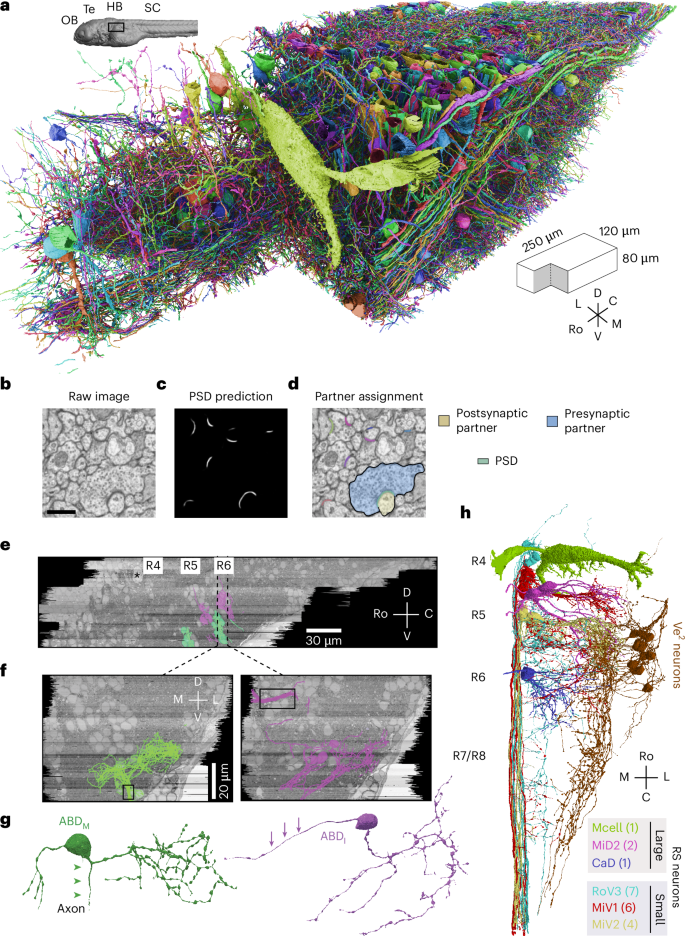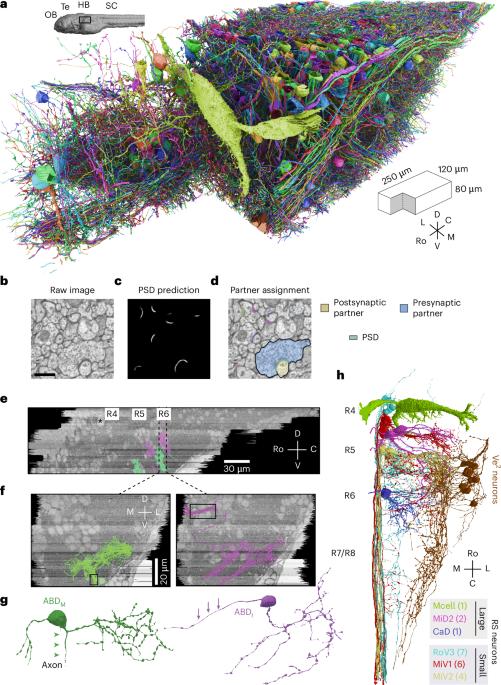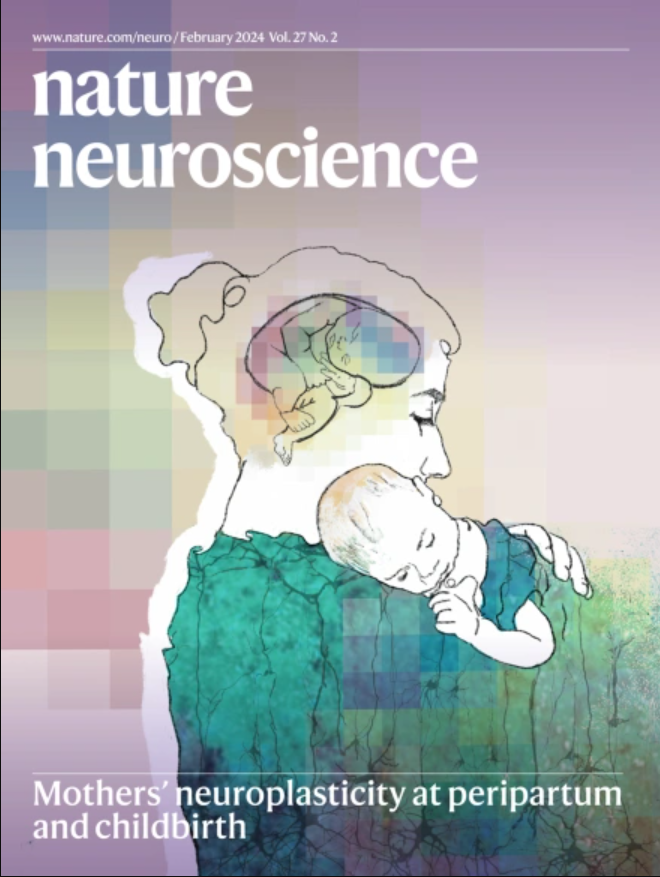Predicting modular functions and neural coding of behavior from a synaptic wiring diagram
IF 21.2
1区 医学
Q1 NEUROSCIENCES
引用次数: 0
Abstract
A long-standing goal in neuroscience is to understand how a circuit’s form influences its function. Here, we reconstruct and analyze a synaptic wiring diagram of the larval zebrafish brainstem to predict key functional properties and validate them through comparison with physiological data. We identify modules of strongly connected neurons that turn out to be specialized for different behavioral functions, the control of eye and body movements. The eye movement module is further organized into two three-block cycles that support the positive feedback long hypothesized to underlie low-dimensional attractor dynamics in oculomotor control. We construct a neural network model based directly on the reconstructed wiring diagram that makes predictions for the cellular-resolution coding of eye position and neural dynamics. These predictions are verified statistically with calcium imaging-based neural activity recordings. This work demonstrates how connectome-based brain modeling can reveal previously unknown anatomical structure in a neural circuit and provide insights linking network form to function. The authors determine the synaptic wiring diagram of a vertebrate circuit and reveal behaviorally associated modules. A model based on this connectome predicts neural coding and dynamics that are verified with calcium imaging data.


从突触线路图预测行为的模块功能和神经编码
神经科学的一个长期目标是了解电路的形式如何影响其功能。在这里,我们重建并分析了幼年斑马鱼脑干的突触线路图,以预测关键的功能特性,并通过与生理数据的比较进行验证。我们确定了连接紧密的神经元模块,这些模块专门用于不同的行为功能,即控制眼球和身体运动。眼球运动模块被进一步组织成两个三区块循环,支持正反馈长假设,这是眼球运动控制中低维吸引子动力学的基础。我们直接根据重建的线路图构建了一个神经网络模型,对眼球位置和神经动态的细胞分辨率编码进行了预测。这些预测通过基于钙成像的神经活动记录进行了统计验证。这项工作展示了基于连接体的大脑建模如何揭示神经回路中以前未知的解剖结构,并提供将网络形式与功能联系起来的见解。
本文章由计算机程序翻译,如有差异,请以英文原文为准。
求助全文
约1分钟内获得全文
求助全文
来源期刊

Nature neuroscience
医学-神经科学
CiteScore
38.60
自引率
1.20%
发文量
212
审稿时长
1 months
期刊介绍:
Nature Neuroscience, a multidisciplinary journal, publishes papers of the utmost quality and significance across all realms of neuroscience. The editors welcome contributions spanning molecular, cellular, systems, and cognitive neuroscience, along with psychophysics, computational modeling, and nervous system disorders. While no area is off-limits, studies offering fundamental insights into nervous system function receive priority.
The journal offers high visibility to both readers and authors, fostering interdisciplinary communication and accessibility to a broad audience. It maintains high standards of copy editing and production, rigorous peer review, rapid publication, and operates independently from academic societies and other vested interests.
In addition to primary research, Nature Neuroscience features news and views, reviews, editorials, commentaries, perspectives, book reviews, and correspondence, aiming to serve as the voice of the global neuroscience community.
 求助内容:
求助内容: 应助结果提醒方式:
应助结果提醒方式:


